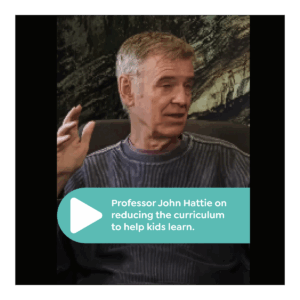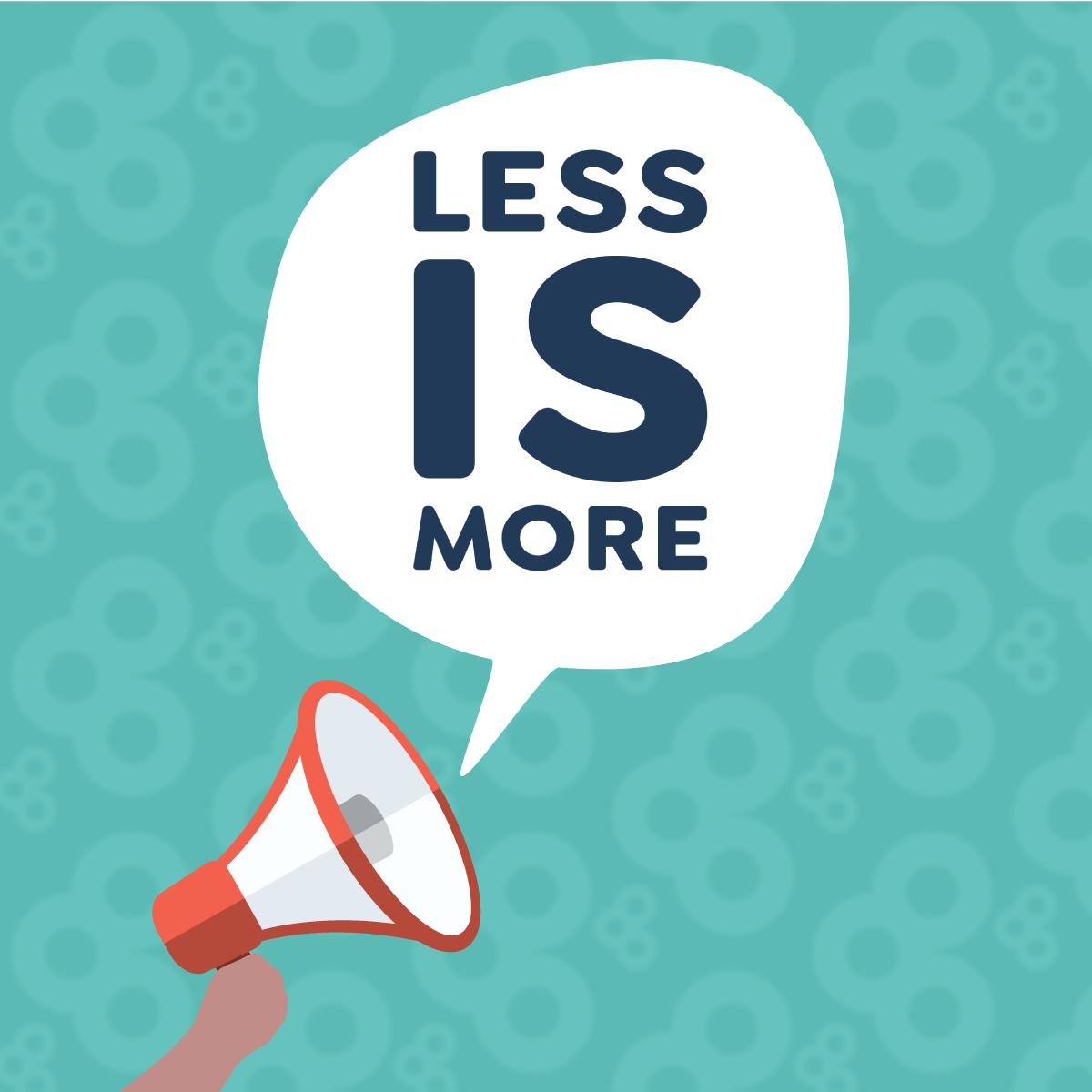Every year, teachers face the impossible task of covering too much curriculum in too little time. The result? Students skim across the surface of content without ever diving into the deep end where real transfer lives. As John Hattie reminds us, the biggest gains come when we do less and go deep.
That’s why less is more is not just a slogan; it’s a learning-science-based approach for building an equitable, viable curriculum that advances student agency.
Narrowing the Curriculum?
This idea isn’t new. For decades, thought leaders have urged us to prioritize what matters most for learners. My mentor Larry Ainsworth has long written about power standards as a way to focus instruction on essentials (Ainsworth, 2013). Mike Schmoker, in his influential book Focus: Elevating the Essentials to Improve Student Learning Radically, describes a “less is more” philosophy built on three elements: a focused and coherent curriculum, clear and prioritized lessons, and authentic literacy (Schmoker, 2011). Robert Marzano’s Guaranteed & Viable Curriculum (GVC) reminded us that equity starts with access: every student must have the time and opportunity to master the most essential outcomes (Marzano, 2003).
In Leading Impact Teams 2.0, my co-author Barb Pitchford and I expand on this tradition. The heart of Chapter 6: Equitable & Viable Curriculum, is simple: a curriculum cannot be equitable unless it is viable. Schools cannot cover every standard, nor should they. Instead, teams must identify and elevate essential standards that are teachable within the time available. This ensures that all learners, not just the privileged few, gain access to the knowledge, skills, and dispositions that matter most for lifelong success.
But Chapter 6 also pushes further: an equitable curriculum is one in which students see themselves in the learning. Drawing on Gloria Ladson-Billings’ work on culturally relevant pedagogy and Gholdy Mohammed’s framework of historically responsive literacy, we argue that equity also means affirming learner identity (Ladson-Billings, 1995; Mohammed, 2020). A viable curriculum must also be an inclusive curriculum, grounded in asset-based pedagogies that honor culture, language, and lived experience.
Big Ideas and Clusters
In mathematics and science, the concept “less is more” manifests as a focus on big ideas. For example, the newly revised California Math Framework emphasizes organizing instruction around big ideas instead of treating standards as a checklist of isolated skills (California Department of Education, 2023). This helps students see patterns, make connections across concepts, and apply their learning in novel situations. Science has long modeled this through NGSS, where disciplinary core ideas and science practices are bundled to build enduring, transferable understanding (NGSS Lead States, 2013).
In most other subjects, essential standards emerge in clusters. Rather than working standard by standard, teachers identify groups of standards that naturally connect and build toward broader competencies. It is best if these clusters repeat across the year so students have ample time for deliberate practice. Clustering ensures learning is coherent and meaningful, reinforcing the idea that less is more when it comes to designing for depth rather than fragmentation.

See this video circulating on Facebook from The Faculty of Education at the University of Melbourne, in which John Hattie highlights the importance of reducing curriculum overload so students have the time and space to engage in deeper learning.
What Hattie Teaches Us About Going Deep
Hattie’s research is crystal clear: depth trumps breadth. When we reduce the noise and zero in on a few critical outcomes, students gain clarity. And with clarity, they build confidence and agency.
When we embrace less is more:
- Students spend more time analyzing, connecting, and questioning.
- Feedback becomes more precise and actionable.
- Teams can track impact with evidence, not just pacing guides.
This is what makes the shift from “coverage” to coherence so powerful.
From Standards to Impact Teams
As we describe in Impact Teams 2.0, identifying essential standards is only the starting line (Bloomberg & Pitchford, 2023). The heart of the work is how teams bring them to life through collaborative inquiry:
-
- Gather Evidence → What do students know and not yet know about this essential skill?
- Analyze → Where are the strengths? Where are the gaps?
- Act → What strategies, modeling, and scaffolds will move students closer to mastery and transfer?
But analysis and action are not neutral. As Chapter 6 emphasizes, quality analysis challenges our unconscious biases. Too often, we look at gaps in achievement without asking how our own systems, expectations, or blind spots may be contributing to them. When teams slow down and interrogate the evidence with curiosity, they start to see learners more holistically through an asset-based lens.
At the same time, effective analysis also focuses energy on what is within our control. We can’t change the challenges students bring with them. Still, we can change how we design learning, how we provide feedback, and how we cultivate dispositions like perseverance, curiosity, and collaboration.
Ultimately, actions must always be grounded in the learner’s identity. That means planning next steps that affirm who students are, the cultures they come from, and the aspirations they hold. When learners see themselves in the curriculum, and when they are taught strategies of self-regulation and metacognition, they don’t just gain knowledge; they build agency.
Our ‘less is more’ approach is so powerful because it gives teams the bandwidth to reflect, challenge biases, and take intentional actions that are equitable, viable, and identity-affirming.
Schools Leading the Way
Schools across the country have had a tremendous impact with this approach:
- Dole Middle School, Hawaii
- Oakland Elementary, Spartanburg, SC
- Carlisle Foster’s Grove, Spartanburg, SC
- PS 16, NYC DOE
- PS 247, NYC DOE
- PS 9, NYC DOE
- PS 45, NYC DOE
- Lammersville Unified School District, CA
These schools prove that less is more. When they narrowed the focus to honor learner identity and provided students with tools of metacognition, they saw deeper learning, stronger collaboration, and students who remembered their learning for a lifetime.
 Shout-Outs: Agency Through Clarity
Shout-Outs: Agency Through Clarity
In this powerful video (watch here), John Hattie reminds us that learners can remember their experiences for a lifetime when we narrow the curriculum and focus on clarity. This intentionality resonates deeply with the work of Impact Teams. Clarity of goals and success criteria allows students to take ownership of their growth and build genuine agency to make decisions and influence their present and future.
And of course, I’m honored to see this work live on in classrooms across the country, as described in my book Impact Teams 2.0. Chapter 6: Equitable & Viable Curriculum makes the case that equity and viability are inseparable and shows how schools from PS 16 in NYC to Dole Middle in Honolulu are proving that when curriculum is focused, inclusive, and collaboratively enacted, less truly is more.
The Bottom Line
Less is more is not about lowering expectations. It’s about cutting through the clutter so every student can access what matters most. An equitable curriculum is, by necessity, viable. It also reflects student identity, honors assets, challenges bias, and builds metacognitive capacity.
When we prioritize and focus, we don’t just teach content; we grow learners who can:
- See themselves in the curriculum
- Think deeply and critically
- Self-regulate and reflect on their own progress
- Transfer learning to new and unpredictable situations
That’s the promise of deeper learning. That’s the power of narrowing to go deep. And that’s the work of Impact Teams 2.0—standing on the shoulders of Ainsworth, Schmoker, Marzano, Ladson-Billings, Mohammed, and Hattie, and carried forward today in schools nationwide.
How will your team embrace less is more this year? Join the Impact Team Movement to learn more!
References
- Ainsworth, L. (2013). Rigorous curriculum design: How to create curricular units of study that align standards, instruction, and assessment. Lead + Learn Press.
- Hattie, J. (2023). Visible learning: The sequel. Routledge.
- Ladson-Billings, G. (1995). Toward a theory of culturally relevant pedagogy. American Educational Research Journal, 32(3), 465–491. https://doi.org/10.3102/00028312032003465
- Marzano, R. J. (2003). What works in schools: Translating research into action. ASCD.
- Mohammed, G. (2020). Cultivating genius: An equity framework for culturally and historically responsive literacy. Scholastic.
- Schmoker, M. (2011). Focus: Elevating the essentials to radically improve student learning. ASCD.
- Bloomberg, P. J., & Pitchford, B. (2023). Leading Impact Teams 2.0: Building a culture of efficacy and agency. Mimi & Todd Press.
- California Department of Education. (2023). Mathematics framework for California public schools: Kindergarten through grade twelve. Sacramento: CDE.
- NGSS Lead States. (2013). Next Generation Science Standards: For states, by states. The National Academies Press. https://doi.org/10.17226/18290




